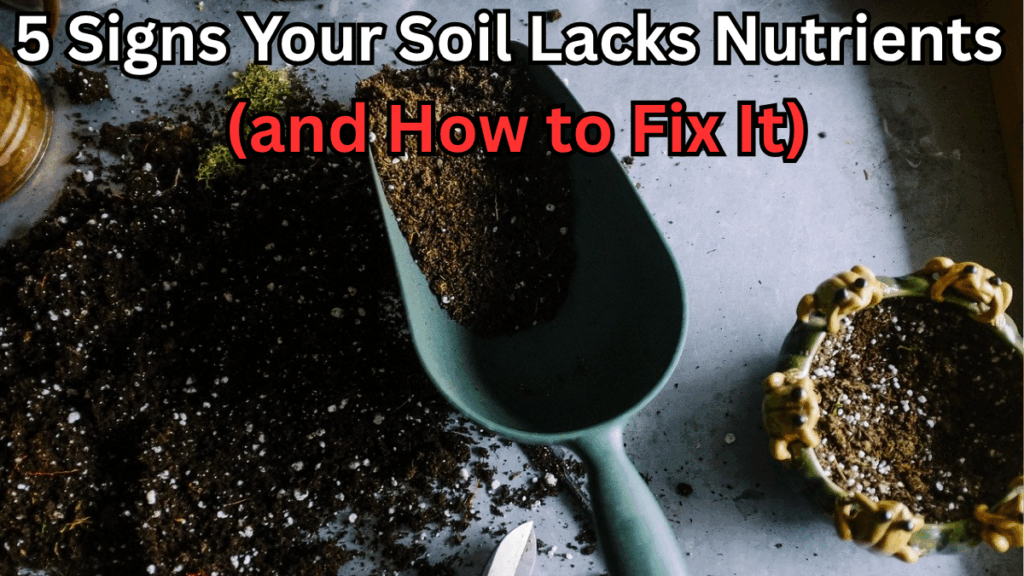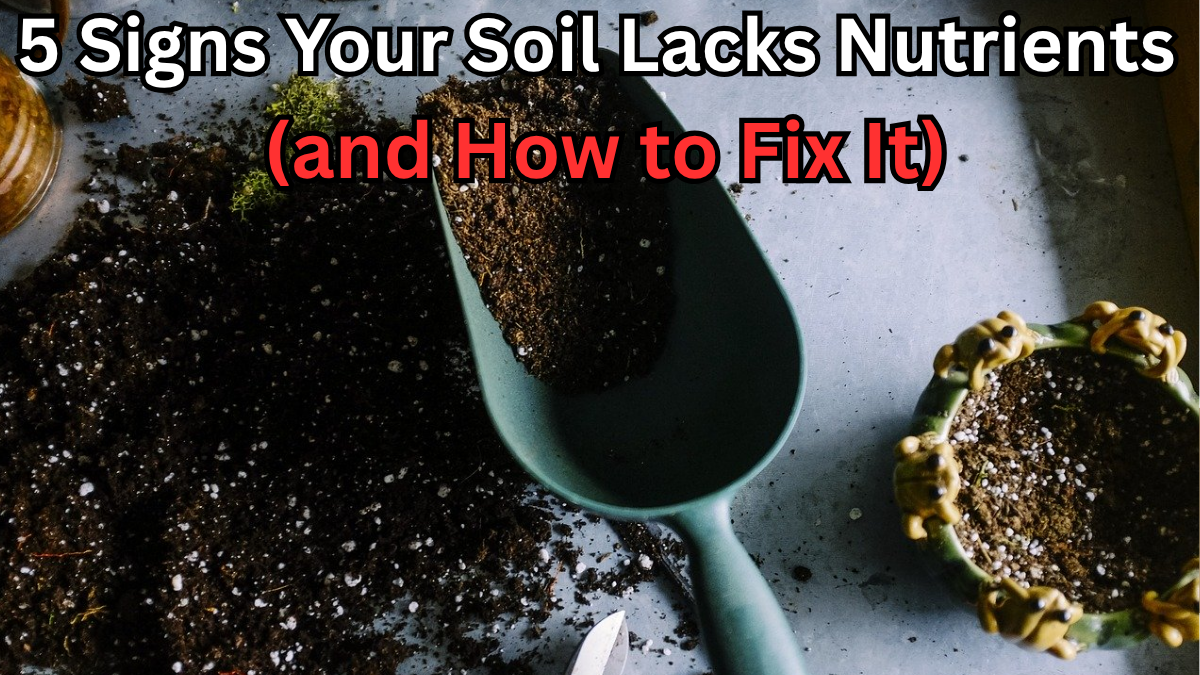Healthy soil is the foundation of a thriving garden. But sometimes, even the most carefully tended garden struggles, and the culprit is often hidden beneath the surface—poor soil lacking essential soil nutrients. Recognizing the signs early can save your plants and boost your garden’s productivity.

1. Yellowing Leaves and Stunted Growth
One of the first signs of nutrient-deficient soil is plants with yellow or pale leaves. This usually indicates a lack of nitrogen, essential for leafy growth. Stunted plants or those that fail to bloom may also be suffering from insufficient soil nutrients.
Garden Fixes
-
Add nitrogen-rich fertilizers like composted manure or blood meal.
-
Rotate crops to restore soil fertility naturally.
-
Use organic mulches to prevent nutrient leaching.
2. Poor Flowering or Fruit Production
If your flowering plants fail to bloom or fruit, your soil might be deficient in phosphorus and potassium. These nutrients are vital for flower and fruit development.
Garden Fixes
-
Use bone meal or rock phosphate for phosphorus.
-
Apply potassium-rich organic amendments like kelp meal.
-
Ensure consistent watering to help nutrient absorption.
3. Weak or Discolored Roots
Roots are your plants’ lifeline, and weak or discolored roots can signal a lack of soil nutrients like calcium and magnesium. Poor root development can affect the entire plant’s growth and resilience.
Garden Fixes
-
Incorporate lime for calcium or Epsom salts for magnesium.
-
Avoid overwatering, which can wash away nutrients.
-
Mulch around plants to protect root systems.
4. Soil Looks or Feels Unhealthy
Sometimes the soil itself gives clues. If it’s compacted, crusty, or has a grayish color, it might be poor soil lacking organic matter and essential nutrients. Healthy soil should be dark, crumbly, and slightly moist.
Garden Fixes
-
Add compost, leaf mold, or well-rotted manure to improve soil structure.
-
Aerate compacted soil to enhance oxygen and nutrient absorption.
-
Introduce cover crops to naturally enrich the soil.
5. Increased Pest or Disease Problems
Plants growing in nutrient-deficient soil are more vulnerable to pests and diseases. Weak plants can’t produce the chemicals they need to defend themselves.
Garden Fixes
-
Feed the soil with balanced organic fertilizers.
-
Encourage beneficial insects like ladybugs and earthworms.
-
Remove diseased plants promptly to prevent spread.
Quick Comparison: Common Soil Problems and Fixes
| Sign | Likely Nutrient Deficiency | Simple Garden Fix |
|---|---|---|
| Yellow leaves, stunted growth | Nitrogen | Compost, blood meal, crop rotation |
| Poor flowering/fruiting | Phosphorus, Potassium | Bone meal, kelp meal, regular watering |
| Weak/discolored roots | Calcium, Magnesium | Lime, Epsom salts, mulching |
| Compacted, grayish soil | Low organic matter | Compost, leaf mold, cover crops |
| High pest/disease incidence | Multiple deficiencies | Balanced fertilizers, beneficial insects, proper pruning |
FAQs
Q1. How can I test my soil for nutrient deficiencies?
You can perform a soil test using a kit from a garden center or send a sample to a local agricultural lab. This will tell you exactly which soil nutrients are lacking.
Q2. Can I fix poor soil naturally?
Yes! Adding compost, manure, cover crops, and mulching can improve poor soil health over time without chemical fertilizers.
Q3. How often should I feed my garden?
For most plants, feeding once every 4-6 weeks during the growing season is sufficient. Slow-release fertilizers or compost amendments also help maintain soil nutrients steadily.
Q4. Will adding too many nutrients harm my plants?
Over-fertilizing can “burn” plants and disrupt soil balance. Always follow recommended amounts and prefer organic, balanced garden fixes when possible.
Click here to learn more
